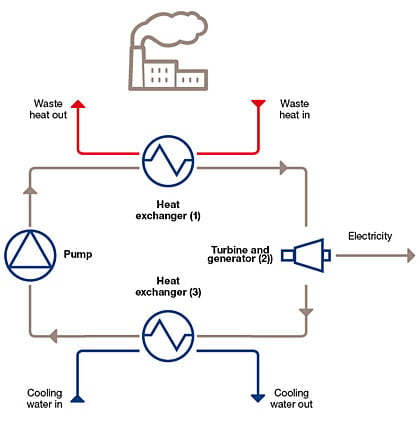Commercially available ORC systems can generate electricity from waste heat with temperatures as low as 55°C (131°F).
An ORC system works according to the same principles as a normal steam turbine. The main difference is that the working medium is an organic fluid instead of water, and that waste heat is used to vaporize the fluid instead of a boiler.
The organic fluid has a boiling point lower than that of water, making it possible to use low-temperature waste heat to generate electricity.
The basic working principle is as follows:
The driving force and what determines the potential for electricity generation is the difference between the outgoing waste heat temperature and outgoing cooling water temperature.
Efficiency is typically 5-10% conversion of waste heat to electricity.
ORC systems are profitable where:

The graph shows a profitability analysis based on information from a supplier of organic Rankine cycle systems.
The cycle converts waste heat to electricity with an efficiency of approximately 10%. In this case the ORC system converts approximately 7 MW (23.9 MMBtu/h) of waste heat into 0.7 MW of electricity, i.e. an annual production of 5,880 MWh.